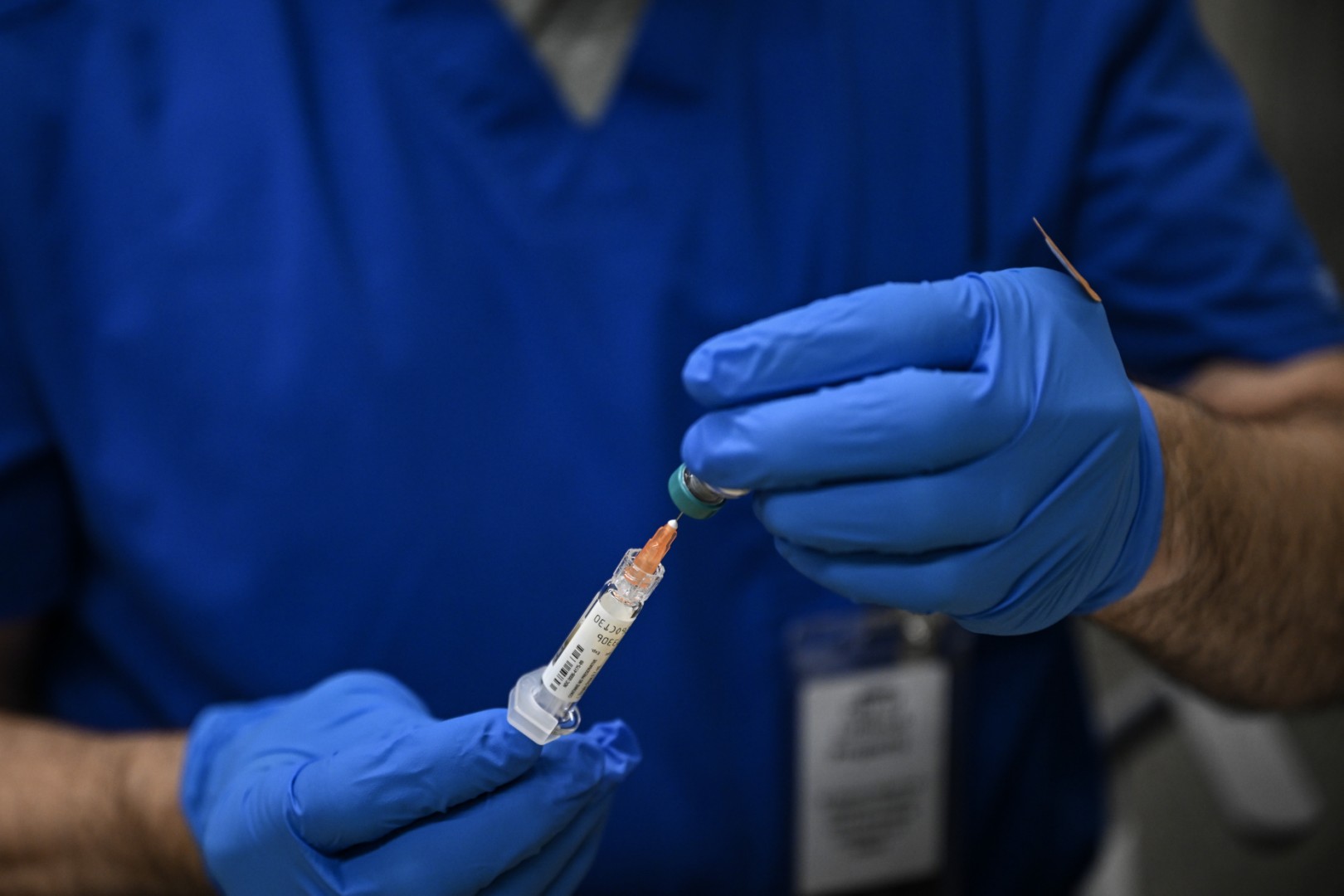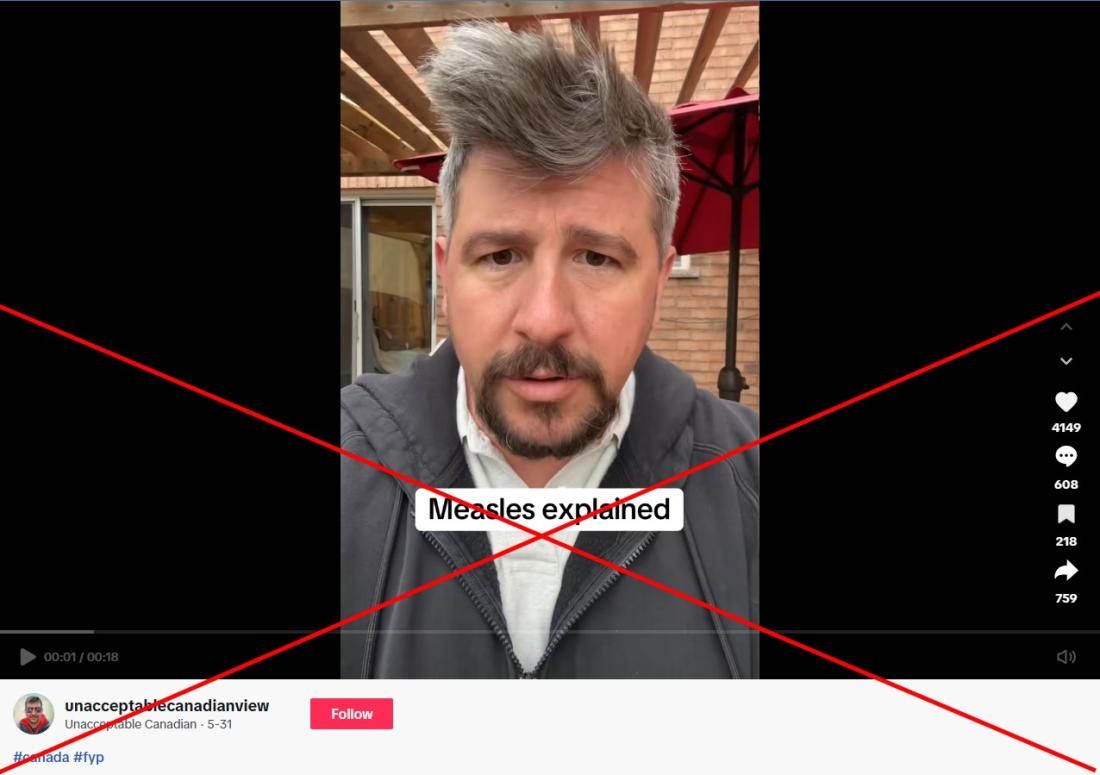
No basis for claims Canadian measles outbreak originated with migrants
- Published on June 23, 2025 at 23:03
- 3 min read
- By Gwen Roley, AFP Canada
"MEASLES RETURNED TO CANADA BECAUSE OF IRRESPONSIBLE IMMIGRATION," says a June 8, 2025 X post.
Similar claims about unvaccinated newcomers exacerbating the spread of measles circulated across X, Facebook and TikTok as infections escalated in the first half of 2025.


According to the Public Health Agency of Canada (PHAC), the nation achieved measles elimination status in 1998 once infections from the disease were no longer endemic (archived here).
The 2,885 confirmed cases -- mostly among unvaccinated children -- that the country has recorded in 2025, and the disease's continued circulation, have since put that status in jeopardy (archived here).
But there is no data to support the claim that unvaccinated immigrants are responsible for spreading the disease to and throughout Canada. In fact, provincial and federal data do not specify citizenship status when tracking measles outbreaks (archived here, here and here).
The current outbreak originated with what the World Health Organization (WHO) called an "imported" case of measles that was transmitted during a large October 2024 gathering in New Brunswick province. Local health authorities said the event involved members of the religious, vaccine-skeptical Mennonite community from multiple provinces and countries (archived here and here).
The WHO reports that only a small number of cases associated with the current outbreak have occurred outside the under-vaccinated communities that were initially affected.
How is measles spreading
Measles infections in New Brunswick have slowed since the initial exposure, leaving Ontario province to become the epicenter of the outbreak with more than 67 percent of Canada's confirmed cases.
Isaac Bogoch, an infectious disease specialist at Toronto General Hospital, told AFP the infections are concentrated in under-vaccinated populations, particularly among Mennonites in southwestern Ontario (archived here and here).
Bogoch said he did not see a connection to immigration.
"Travelers to the country import measles into Canada [...] but those numbers are dwarfed by the locally acquired cases we're seeing in southwestern Ontario, among this largely under-vaccinated Mennonite community," Bogoch said June 19.
In Alberta, the province with the second-highest number of cases, it is less clear how infections spread. Some reports have pointed to importation from Ontario. The province's Ministry of Primary and Preventative Health Services, meanwhile, suggested the virus was also introduced by international travel.
"With significantly more cases now being reported worldwide, we are seeing more cases here at home," a ministry official told AFP in a June 19 email. "This highlights the importance of staying up to date on measles vaccinations to protect both individuals and communities."
Bogoch said measles is easily preventable by vaccination (archived here).
But between 2019 and 2023, PHAC reported that vaccination against measles for 2-year-old children, one of the groups most vulnerable to the disease, declined from 89.5 percent to 82.5 percent across several provinces, including Alberta (archived here).
Local media reported that under-vaccination in Alberta is driven by a mix of religious convictions and vaccine hesitancy stoked during the Covid-19 pandemic (archived here).
Vaccination of immigrants
Bogoch and the Alberta ministry official noted that even as Canada achieved elimination status, the disease continued to circulate in other countries where vaccination rates are lower.
Proof of vaccination is not mandatory to immigrate to Canada. According to Immigration, Refugees and Citizenship Canada (IRCC), it may be impossible for individuals to present immunization records (archived here).
IRCC spokesman Remi Lariviere said permanent resident and certain temporary resident applicants must submit to a medical exam and may be offered voluntary vaccination, including the shot for measles, mumps and rubella (MMR).
"(IRCC) routinely monitors health outbreaks occurring internationally to determine what, if any, additional public health measures may be needed to reduce the risk of importation and spread of communicable diseases in Canada," Lariviere said in a June 19 email.
According to the most recent available data, Canada received the most immigrants from India, the Philippines, China, Syria and Nigeria in 2021 (archived here).
India is one of the places where travelers to Canada were exposed to measles, according to PHAC, but WHO also reports 90 percent of people in India were immunized against the disease in 2023 (archived here). Seventy percent of people in the Philippines were immunized by 2024 (archived here).
As Canada's previous pro-immigration consensus has shifted, AFP has repeatedly debunked misleading claims that blamed newcomers for lack of jobs and social and food assistance.
Read more of AFP's reporting on misinformation in Canada here.
Copyright © AFP 2017-2025. Any commercial use of this content requires a subscription. Click here to find out more.
Is there content that you would like AFP to fact-check? Get in touch.
Contact us




